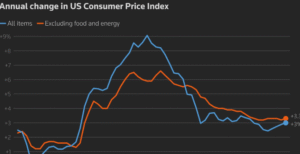$TSLA $BYDDF $XLE
#CleanEnergy #China #RenewableEnergy #Tesla #Musk #FossilFuels #ElectricVehicles #ClimateChange #GreenTech #EnergyTransition #GlobalEconomy #SustainableGrowth
China has emerged as a formidable player in the clean-energy race, leveraging its massive industrial base, government-backed investments, and a long-term strategy to dominate renewable energy production and electric vehicle markets. Meanwhile, global counterparts like the United States seem divided on their approach to achieving energy sustainability. While former President Donald Trump’s administration openly embraced fossil fuels to stimulate traditional energy industries, key figures like Elon Musk, the CEO of Tesla, have shifted the focus towards a green future. Musk’s commitment to electric vehicles (EVs) and clean energy solutions places him at odds with the traditional energy sector that leaders like Trump championed. Yet, this divergence underscores a fascinating dynamic in the global green-tech competition, with financial and economic implications for both nations.
Tesla, for instance, has become a bellwether for the EV industry, driving innovation and forcing competitors—both domestic and international—to accelerate their own clean-energy strategies. Major Chinese players like BYD, supported by Beijing’s proactive policies, are competing fiercely to dominate EV manufacturing. The growing competition between U.S.-based Tesla and China’s BYD shines a light on how global energy transitions will rely heavily on production scale, technological innovation, and financial backing. Importantly, both companies have been pivotal in reshaping the EV supply chain, including the production of lithium-ion batteries, the essential component in electric vehicles. Financial markets have reflected this rivalry, with Tesla ($TSLA) and BYD ($BYDDF) stocks commanding significant investor interest. Musk’s and Tesla’s pivot to renewable energy solutions, including battery storage and solar technology, also poses a challenge to traditional fossil-fuel-oriented sectors, as evidenced by the performance of energy-focused ETFs like $XLE.
On a geopolitical level, China’s structured approach to clean energy—with substantial governmental subsidies and trade policies—has provided it with a measurable edge. Beijing’s initiatives include aggressive measures to secure the lion’s share of critical raw materials, such as lithium and rare earth metals, which are essential for battery technologies and renewable energy systems. These efforts have built an outsized market share in clean-energy supply chains and affordability, giving Chinese companies a strong export advantage. On the other hand, the U.S., while home to trailblazing companies like Tesla, faces hurdles such as fragmented policy frameworks and competition from fossil fuel advocates, exemplified by Trump’s era policies. Such policies have at times slowed the energy transition in favor of protecting traditional energy jobs, thereby complicating America’s positioning in this critical economic race.
For investors, the clean-energy competition between these two economic superpowers highlights opportunities and risks. The rise of renewable energy and EV companies has already sparked significant shifts in global capital allocation. Companies like Tesla continue to grow rapidly, attracting billions of dollars from institutional and retail investors alike. Simultaneously, volatility in oil and gas markets demonstrates that fossil fuel dependency is fraught with uncertainty, particularly as global regulations tighten and environmental concerns amplify. As the U.S. and China battle to dominate this evolving sector, the ability to balance innovation, long-term planning, and global collaborations will likely determine the ultimate winner of the clean-energy era. However, financial trends suggest that both regions can expect mixed implications, from reshaping industries to fostering trade tensions that could reverberate across markets worldwide.










Comments are closed.